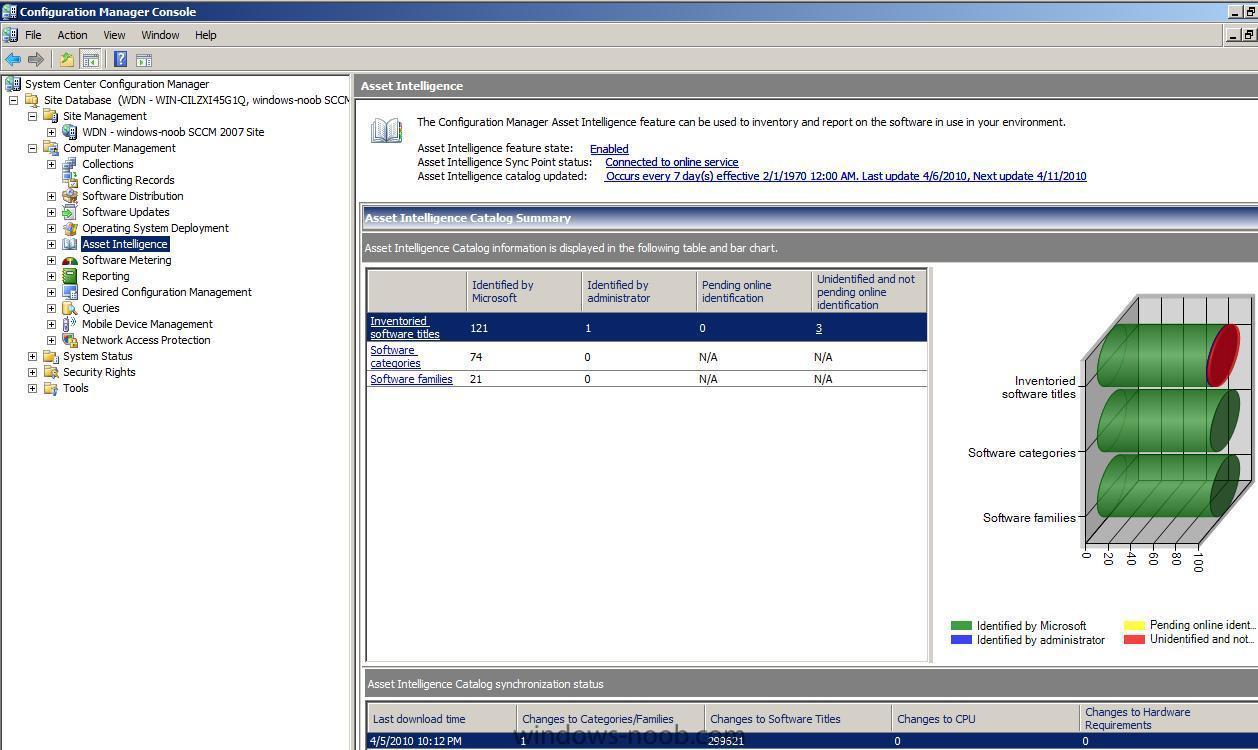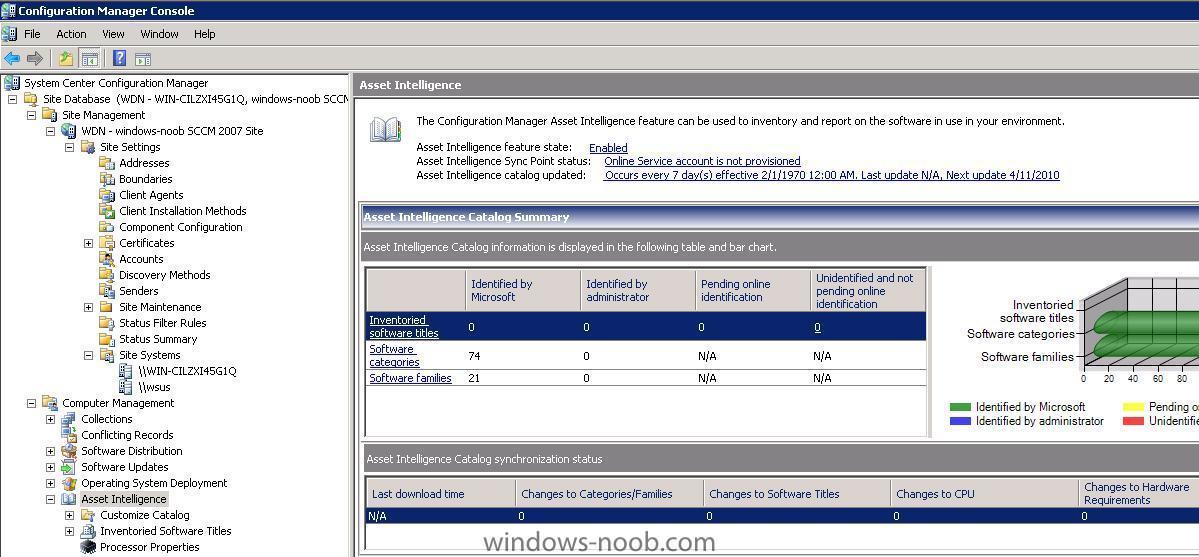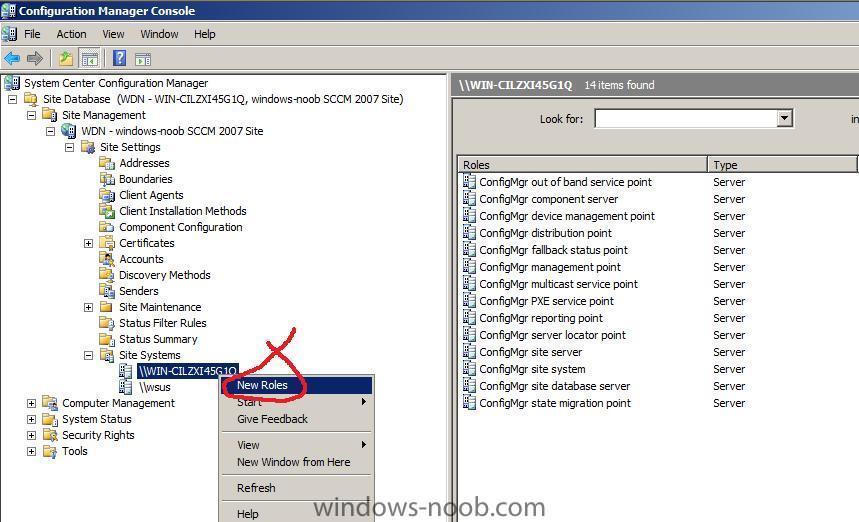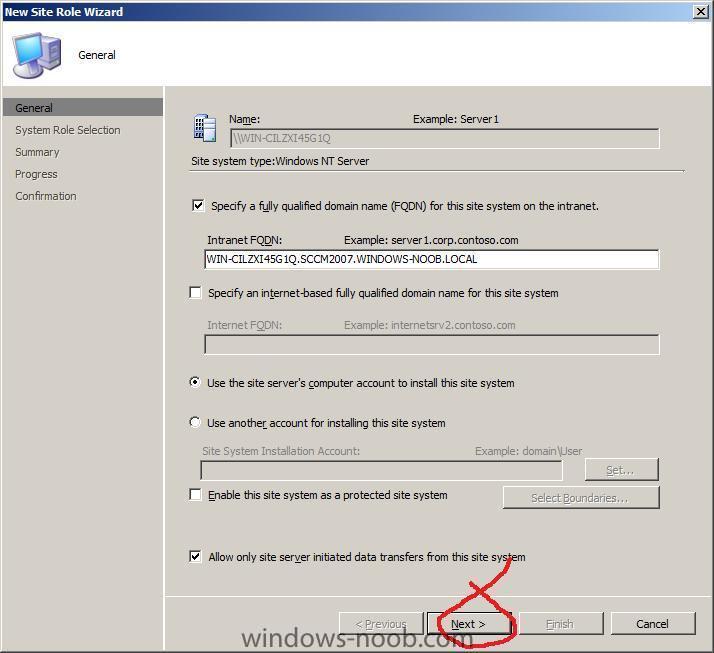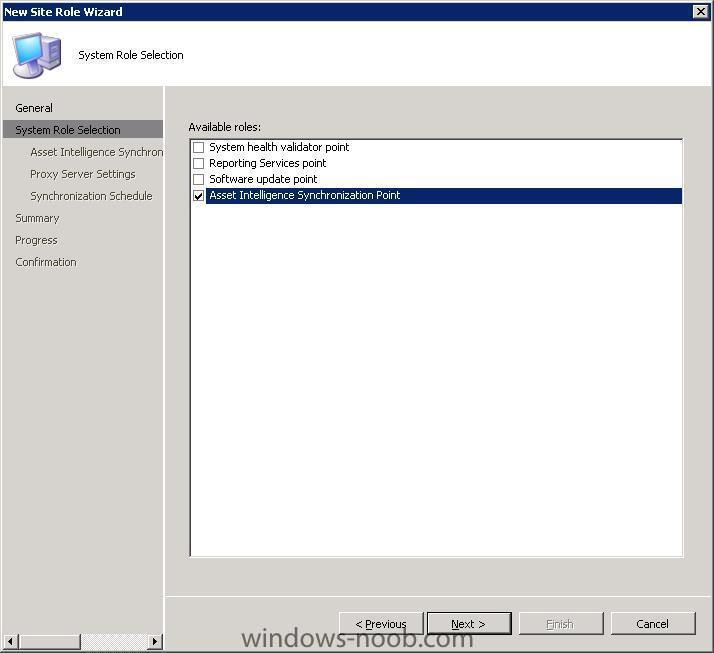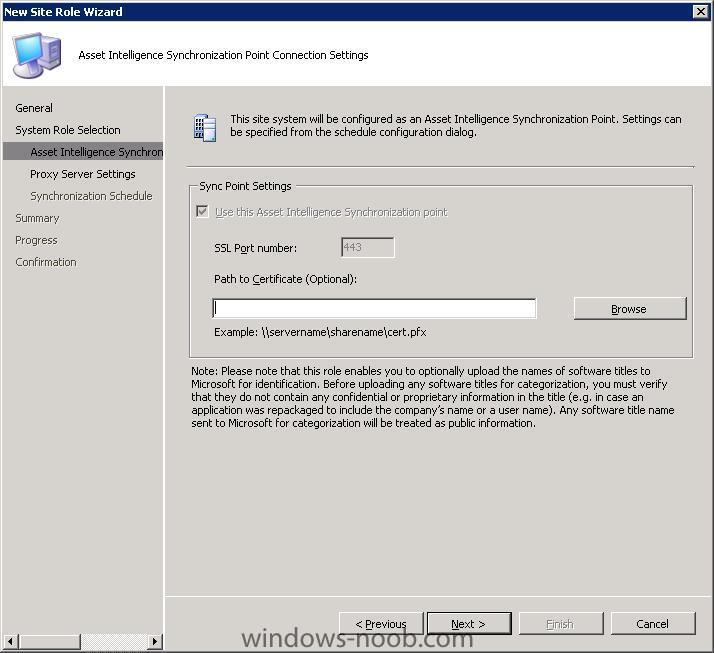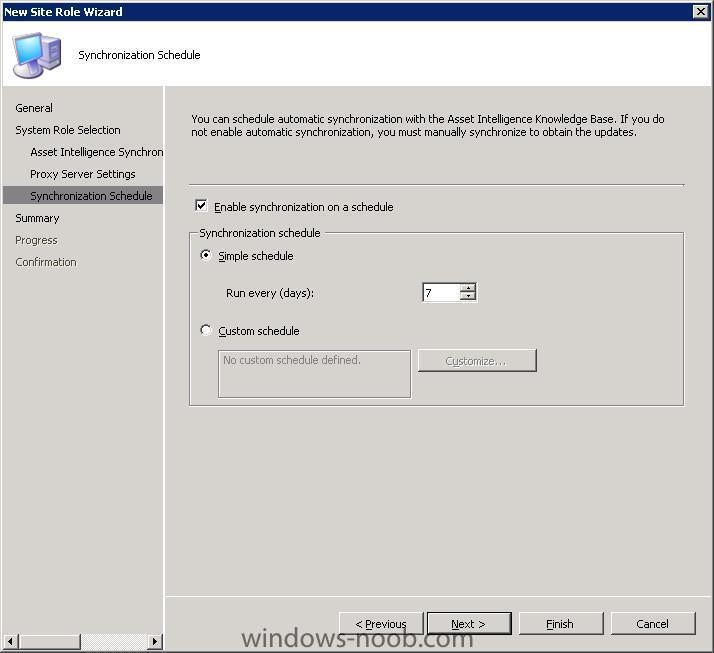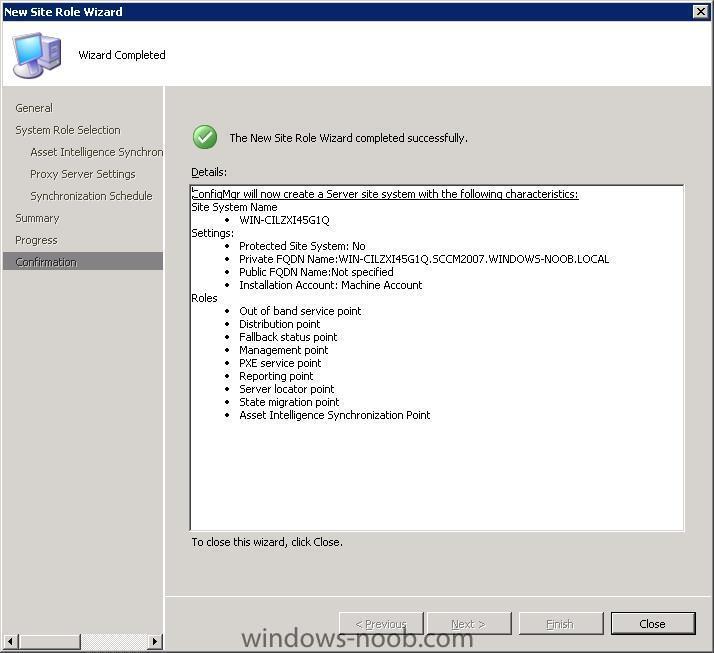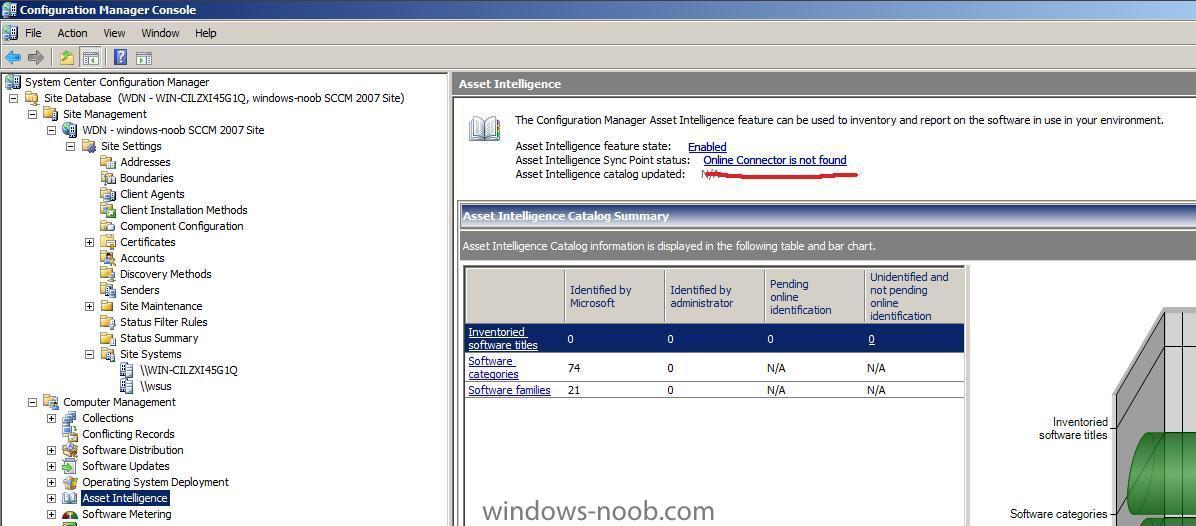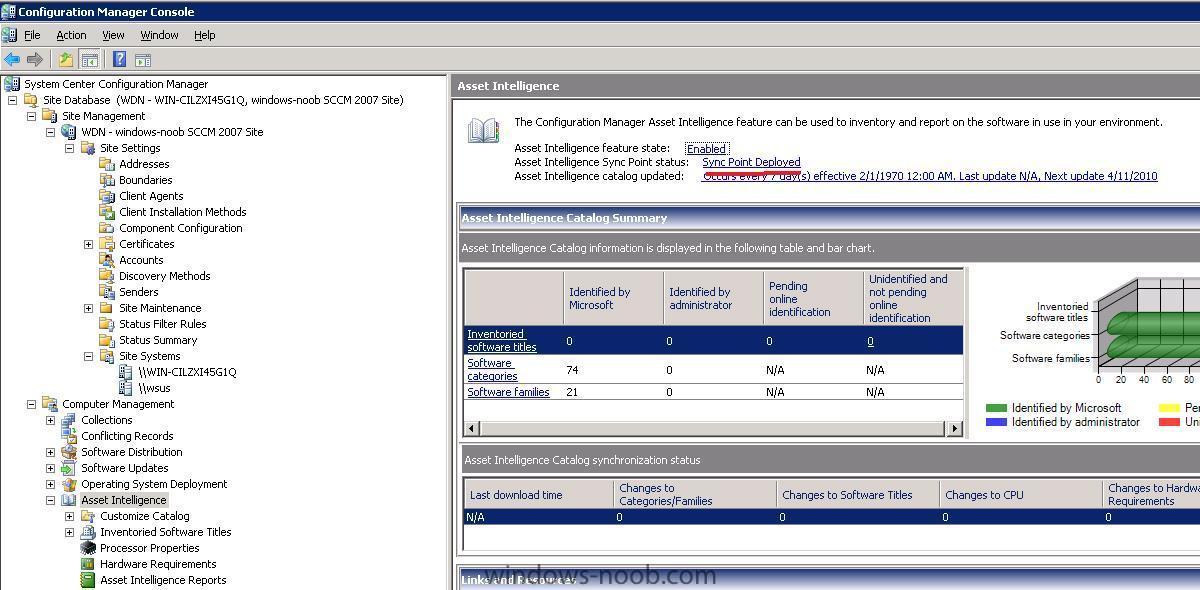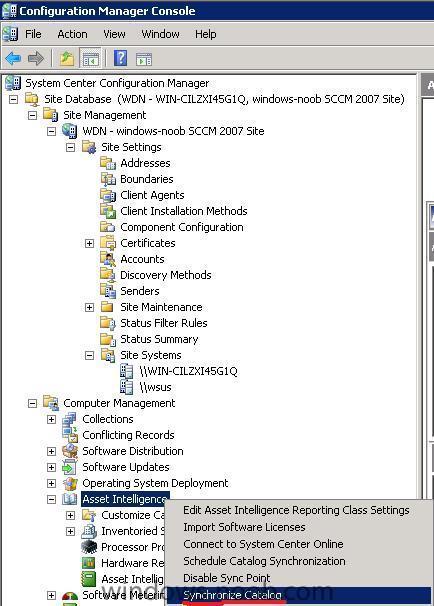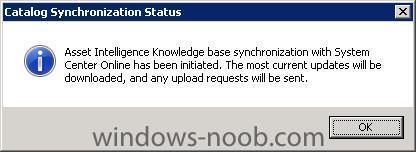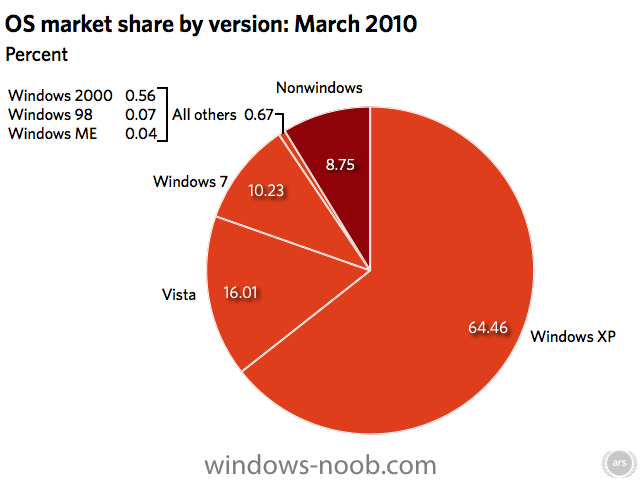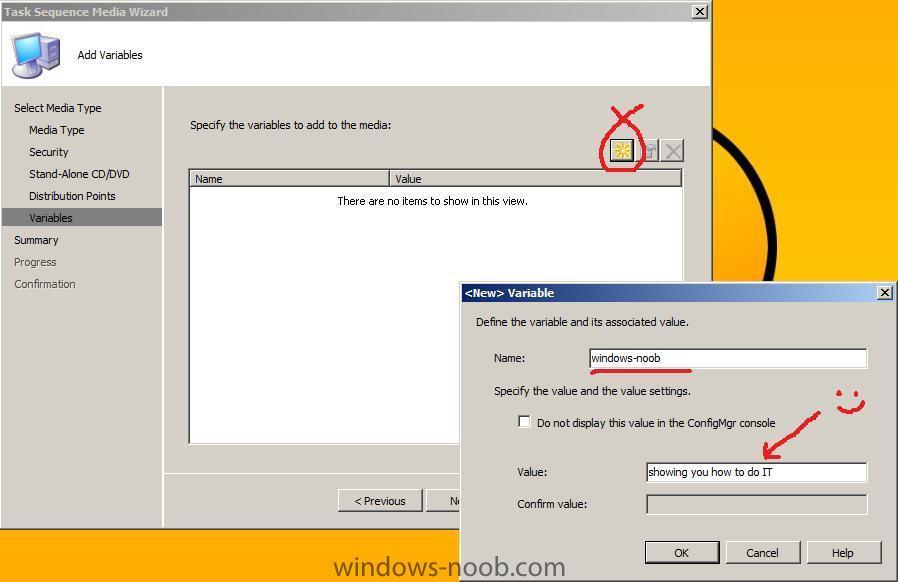-
Posts
9242 -
Joined
-
Last visited
-
Days Won
368
Everything posted by anyweb
-
ok you have wds on one server right ? can you install the PSP role on that server yes/no ?
-
this is how create a new group for each model and place the appropriate software install commands in each group, cheers niall
-

Configuring Software Update Point within SCCM
anyweb replied to anyweb's question in Software Update Point
try temporarily disbaling the firewall on the client and do a Data Discovery, do you see the client in configmgr collections ? is it approved and client=yes ? -
i assume you mean that the video driver is not appearing once xp is installed or ?
-
it shouldn't hang, verify that there isnt a UAC prompt or some other process holding it back (anti-virus perhaps ?)
-

What is Asset Intelligence and how can I use it in SCCM
anyweb replied to anyweb's question in Asset Management
Asset Intelligence logs There are some Asset Intelligence logs on the SCCM server that you should be aware of. On computers that serve as management points, the client logs are located in the %ProgramFiles%\SMS_CCM\Logs folder. Eg: on my server here they are found at D:\Program Files (x86)\Microsoft Configuration Manager\Logs aikbmgr.log Provides information about the Asset Intelligence catalog manager service. aiupdatesvc.log Provides information about the Asset Intelligence catalog synchronization service and can be useful to determine the following: * When the service starts. * Where the Asset Intelligence synchronization point is located. * The time of the next scheduled catalog synchronization. For example, look for a section of the log that should correspond to this:- aiussetup.log Provides information about the installation of the Asset Intelligence catalog synchronization point site system role. Eg: look for the following aiusmsi.log Provides information about the installation of the Asset Intelligence catalog synchronization point site system role. A successful install should be listed as such Where can I get More Info about Asset Intelligence ? For more info about Asset Intelligence from Technet please see the following: http://technet.microsoft.com/en-us/library/bb632714.aspx - Overview of Asset Intelligence http://technet.microsoft.com/en-us/library/cc161825.aspx - Configuring Asset Intelligence http://technet.microsoft.com/en-us/library/cc161947.aspx - Prerequisites for Asset Intelligence http://technet.microsoft.com/en-us/library/cc431446.aspx - Asset Intelligence Security Best Practices and Privacy Information http://technet.microsoft.com/en-us/library/cc161767.aspx - Troubleshooting Asset Intelligence -

What is Asset Intelligence and how can I use it in SCCM
anyweb replied to anyweb's question in Asset Management
Connected to Online Service Once the sync has taken place the Asset Intelligence Sync Status should be listed as Connected to Online Service If it is not, for example if it states that the online service account is not provisioned [see below screenshot], you could try changing the sync schedule to every 1 days until the sync has taken place, then change it back to the default of every 7 days once it is listed as Connected to Online Service. If it's still failing verify your connection settings (proxy) and review the AIupdatesvc logs and see if the following Hotfix is applicable to you. Technet -Announcement: Update your System Center Online Authentication Certificate for Asset Intelligence -
MED-V 1.0 SP1 RTM and App-V 4.6 Localized versions are now available! * Posted by: Stephen L Rose * 10:38 AM Thursday Apr 01, 2010 * 3 Comments An update to our Feb 23rd blog post on the new Med-V v2 SP 1 RC. Med-V 1.0 SP has RTM’ed and is now available for production deployment on Windows 7. Med-V 1.0 Sp1 now offers support for Windows 7 hosts – 32bit and 64bit, Windows Server 2008 R2, and Windows XP SP3. Existing MDOP customers can download MDOP 2010 Refresh at the Volume Licensing Service Center (VLSC). For evaluation, MDOP 2010 Refresh can be downloaded from MSDN and TechNet. Also updated in the release today, App-v 4.6 now offers localized versions of the App-V client for 23 languages including: Brazilian Portuguese, Chinese, Czech, Danish, Dutch, Finnish, French, German, Greek, Hungarian, Italian, Japanese, Korean, Norwegian, Polish , Portuguese, , Russian, Slovak, Slovenian, Spanish, Swedish , Turkish. To learn more about App-V, Med-V or the Microsoft Desktop Optimization Pack, please visit the Springboard Series on TechNet
-

Deploying SCCM 2007 client using SUP?
anyweb replied to GopherRob's question in Troubleshooting, Tools, Hints and Tips
are they Dell gx260s ? -

Configuring Software Update Point within SCCM
anyweb replied to anyweb's question in Software Update Point
you need to understand that the initial sync (and all subsequent syncs) only downloads the METADATA of the updates, ie: the information pertaining to what the update is, where it is, what os it's for, etc. therefore we need to download the updates into a deployment package to actually use them, also understand that if you have downloaded the updates already that they will not be re-downloaded unless they have changed, does this answer your question ? if not, please tell me what is unclear -

What is Asset Intelligence and how can I use it in SCCM
anyweb posted a question in Asset Management
In part one we enabled Asset Intelligence. Now we will add the Asset Intelligence Role and enable the Online Connection Feature. Please refer to Technet for best Practise advise. Before we start, we can see that the Online Connector is Not Found. So let's fix that. Adding the Asset Intelligence Role In Configuration Manager, expand Site Systems, locate your site server, expand it right click and choose New Roles When the New Site Role Wizard appears, click Next Select the Asset Intelligence Synchronization Point role and click next When the Asset Intelligence Synchronisation Point connection settings window appears, browse to the path of your Certificate if using SCCM 2007 Sp1. Note: This step is not necessary for Configuration Manager 2007 SP2 sites because the connection certificate is automatically provisioned during site role installation. Click Next to continue. enter your proxy settings set your Synchronization schedule settings Review the summary and the confirmation... Now that we are done, go back into the Asset Intelligence node and refresh (F5), you should see the Sync Point is Deployed. Starting a Manual Sync To initiate a manual Syncrhonisation, right click on Asset Intelligence and select Synchronize Catalog review the Sync initiated message Note: you can only do one sync in any 12 hour period, if you try again it will pop up a message telling you this. -
Last month, Windows 7 crossed into double-digit market share numbers. Microsoft disclosed that it sold more than 60 million copies of Windows 7 by the end of 2009, and now we know this very quick growth has continued through the first quarter of 2010. On the whole, between February and March 2010, Windows dropped a sizeable 0.54 percentage points (from 92.12 percent to 91.58 percent). More specifically, Windows XP dropped 1.03 percentage points (from 65.49 percent to 64.46 percent), Windows Vista dipped 0.50 percentage points (from 16.51 percent to 16.01 percent), and Windows 7 jumped 1.31 percentage points (from 8.92 percentage points to 10.23 percent). read more > http://arstechnica.com/microsoft/news/2010/04/windows-7-surpasses-10-market-share.ars?utm_source=microblogging&utm_medium=arstch&utm_term=Main%20Account&utm_campaign=microblogging
-
are you sure DNS is working ? do an nslookup test on any pc in the domain
-
R2 is not a requirement it just makes your job easier (unknown computer support amongst other things) have you tried restarting the WDS service ? and.. did you distribute both X86 and X64 boot images to your distribution points ?
-
the smsts.log file is on the client, check the following post for details of finding that log file
-
hi and welcome, did you import the computer into SCCM first ? if not please try that, have you installed R2 in SCCM ? if so are you going to enable the Unknown Computers support ability ?
-
System Center Service Manager 2010, a new addition to the System Center suite of products, delivers an integrated platform for automating your organization’s IT Service Management best practices and adapting them to meet your organization’s requirements. Service Manager can help your organization to increase productivity, reduce costs, improve resolution times, and meet compliance standards. Its built-in processes are based on industry best practices such as those found in Microsoft Operations Framework (MOF) and the IT Infrastructure Library (ITIL). more info > http://www.microsoft.com/systemcenter/en/us/service-manager.aspx download the beta > http://www.microsoft.com/downloads/details.aspx?FamilyID=19226783-AE6C-4CE5-82FD-59357A7BD365&displaylang=en
-
As geeks, we're well aware of the importance of running as a normal user instead of as root (UNIX/Linux/BSD) or administrator (Windows). However, while this should be common knowledge to anyone reading OSNews, it's often hard to illustrate just how important it is - until now, that is. A report by BeyondTrust looked at how many security bulletins issused by Microsoft are mitigated by simply... Not running as administrator. Despite the advances made by Microsoft on securing Windows, the fact of the matter is that the first user created on a new system is always administrator. This means that many (most?) Windows users out there are running as administrator, and as BeyondTrust's report shows - that's incredibly insecure. Of the total amount of security vulnerabilities put out by Microsoft in 2009, across all versions of Windows and Office, 64% are mitigated by removing administrator rights. Microsoft published 190 security vulnerabilities last year, and 121 of them are thwarted by running without administrator rights. Breaking it down per product, the figures become even more interesting. Microsoft reported 55 Office vulnerabilities in 2009, and all of them are mitigated by removing admin rights. Of the 33 Internet Explorer issues reported, 94% were thwarted by removing admin rights. For Internet Explorer 8, 100% would be. If we restrict the vulnerabilities to just Windows, we see that 53% can be mitigated by not running as admin. The threat of the most severe type of vulnerability, the ones that would allow remote code execution, can be greatly educed by not running as admin: 87% of them are ineffective when you do not run as administrator. These figures how us exactly what we already knew: running as administrator is stupid, and asking for trouble. All the more reason for Microsoft to finally abolish that quaint custom of making the first user an administrator. via > http://www.osnews.com/story/23088/64_of_MS_Vulnerabilities_Mitigated_by_Removing_Admin_Rights
-
if you want to use the unknown computer feature of R2 then you'll need to advertise some task sequences to the Unknown Computers collection, if you make them optional then you'll get a list to choose from
-

Deploying SCCM 2007 client using SUP?
anyweb replied to GopherRob's question in Troubleshooting, Tools, Hints and Tips
Microsoft recommends keeping sql on box so i wouldn't move it, you can adjust the amount of RAM sql eats if you want help with that i'll tell you, as regards your other problem, are we talking one boundary here or more than one ? and more than one site ? -
MDT uses the ztitatoo script to do something very similar, have you looked into that and looked into integrating mdt into sccm ?
-

Strange issue pushing software to BDP's
anyweb replied to Zero's question in Troubleshooting, Tools, Hints and Tips
if you disable antivirus software on that bdp does it work then ? -
as Kinom correctly says you need SCCM 2007 sp2, more details here http://www.windows-noob.com/forums/index.php?/topic/1475-operating-system-deployment-support-in-sccm-2007-sp2/
-
just install the SCCM Admin console on a computer and do it there, have you tried that ?
-



